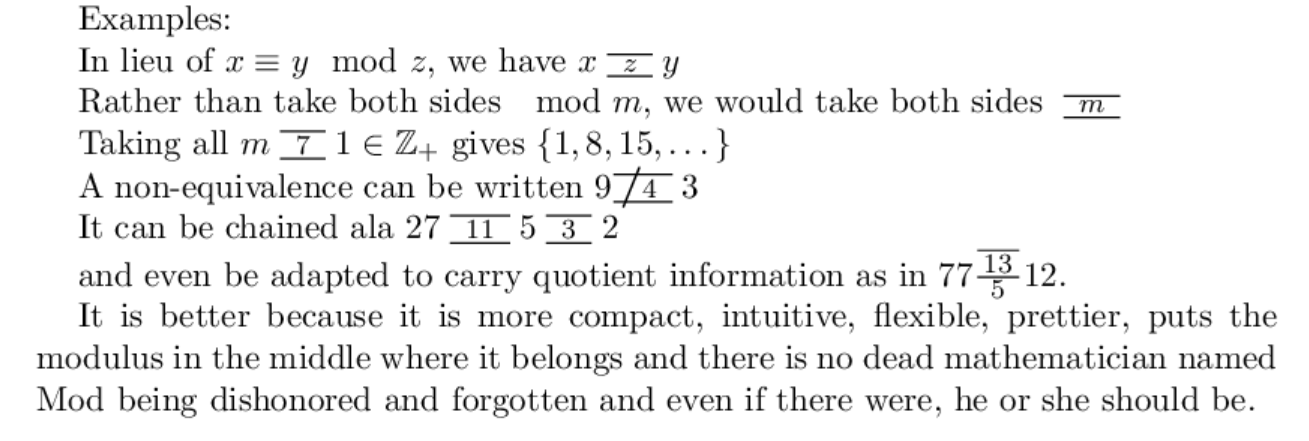Talk:Modular equivalence: Difference between revisions
Jump to navigation
Jump to search
(Alternate Mod Notation) |
No edit summary |
||
| Line 18: | Line 18: | ||
[[File:Modexamples.png|left|alt=Alternate mod notation as rendered in Latex|Alternate mod notation as rendered in Latex]] | [[File:Modexamples.png|left|alt=Alternate mod notation as rendered in Latex|Alternate mod notation as rendered in Latex]] | ||
Revision as of 18:24, 2 July 2021
Mod notation can be bulky and counter-intuitive. Here is an alternate mod notation that simply removes the middle line from the equivalence sign, places the modulus inside and drops the now moot 'mod'.
The following macros are defined for the Latex that follows and the second graphic shows the result:
Examples: In lieu of $x\equiv y \mod{z}$, we have $x\bm{z}y$ Rather than take both sides $\mod{m}$, we would take both sides $\bm{m}$ Taking all $m\bm{7}1\in \mathbb{Z}_{+}$ gives $\{1,8,15,\dots\}$ A non-equivalence can be written $9\bmn{4}3$ It can be chained ala $27\bm{11}5\bm{3}2$ and even be adapted to carry quotient information as in $77\bmq{13}{5}12$.
Here's how that looks when rendered:

